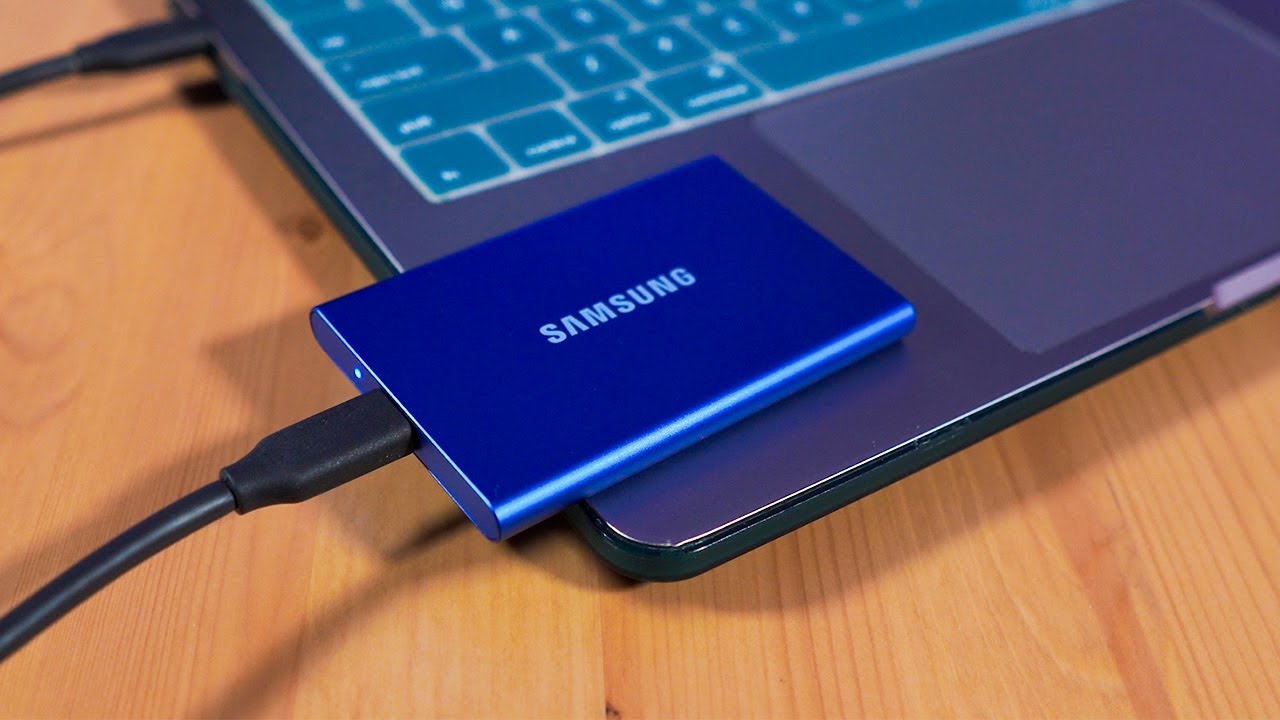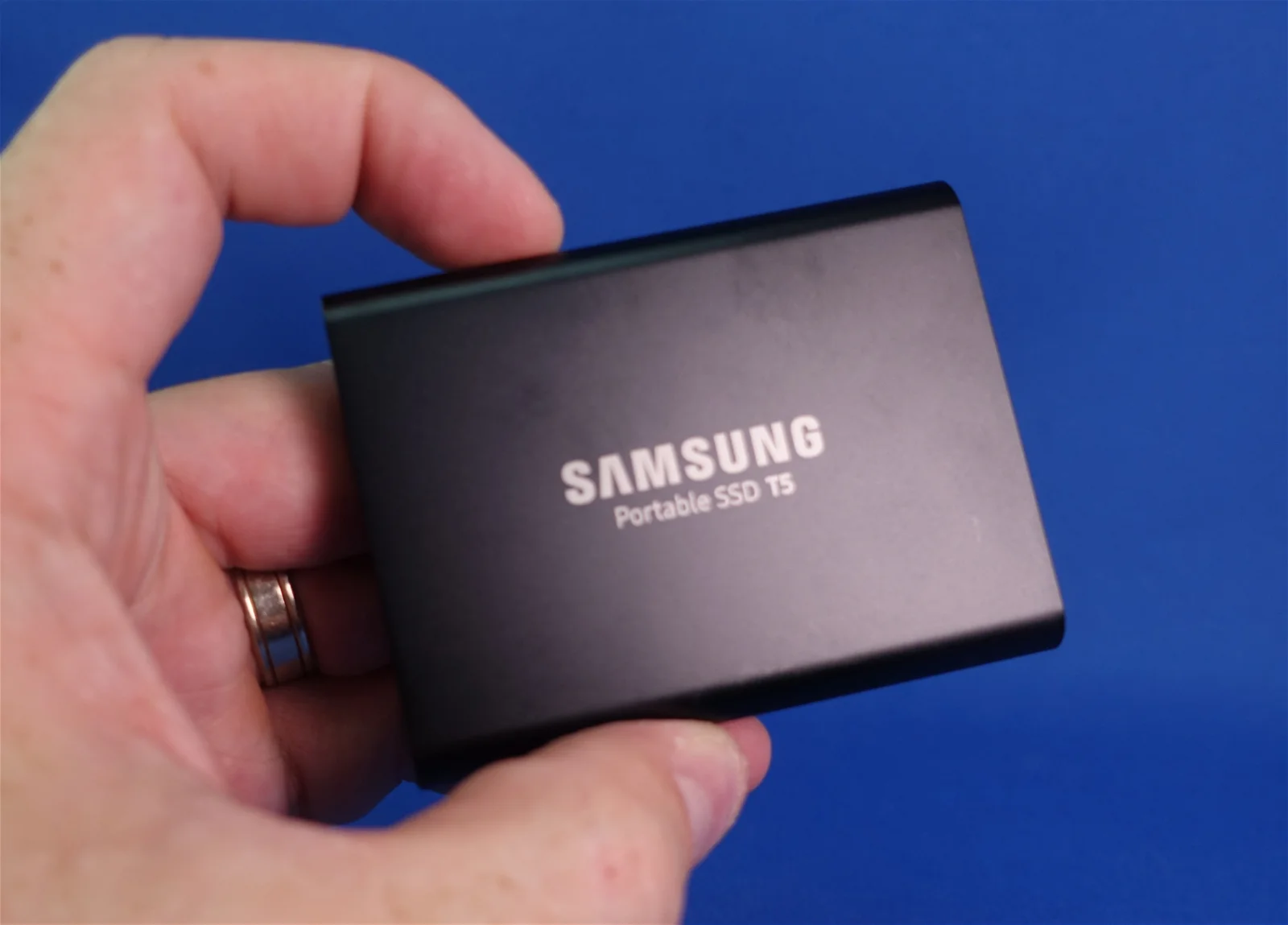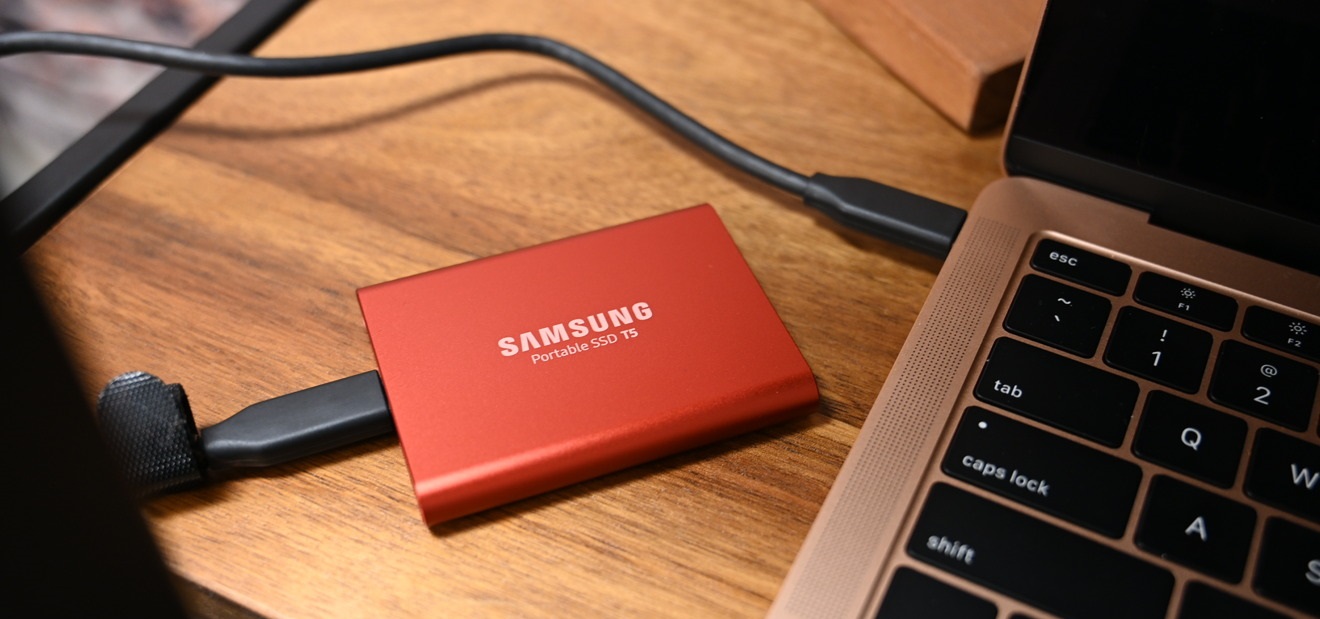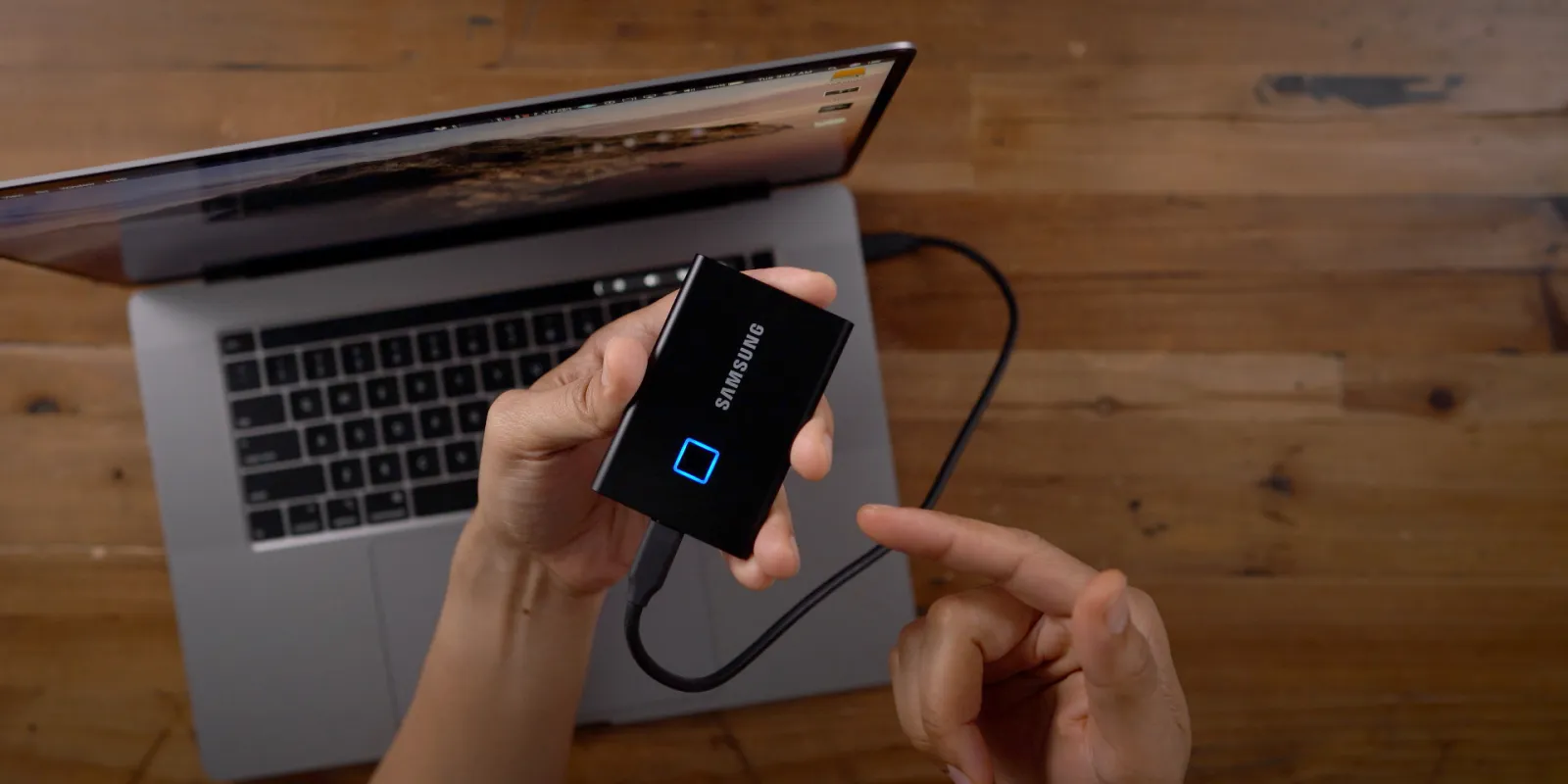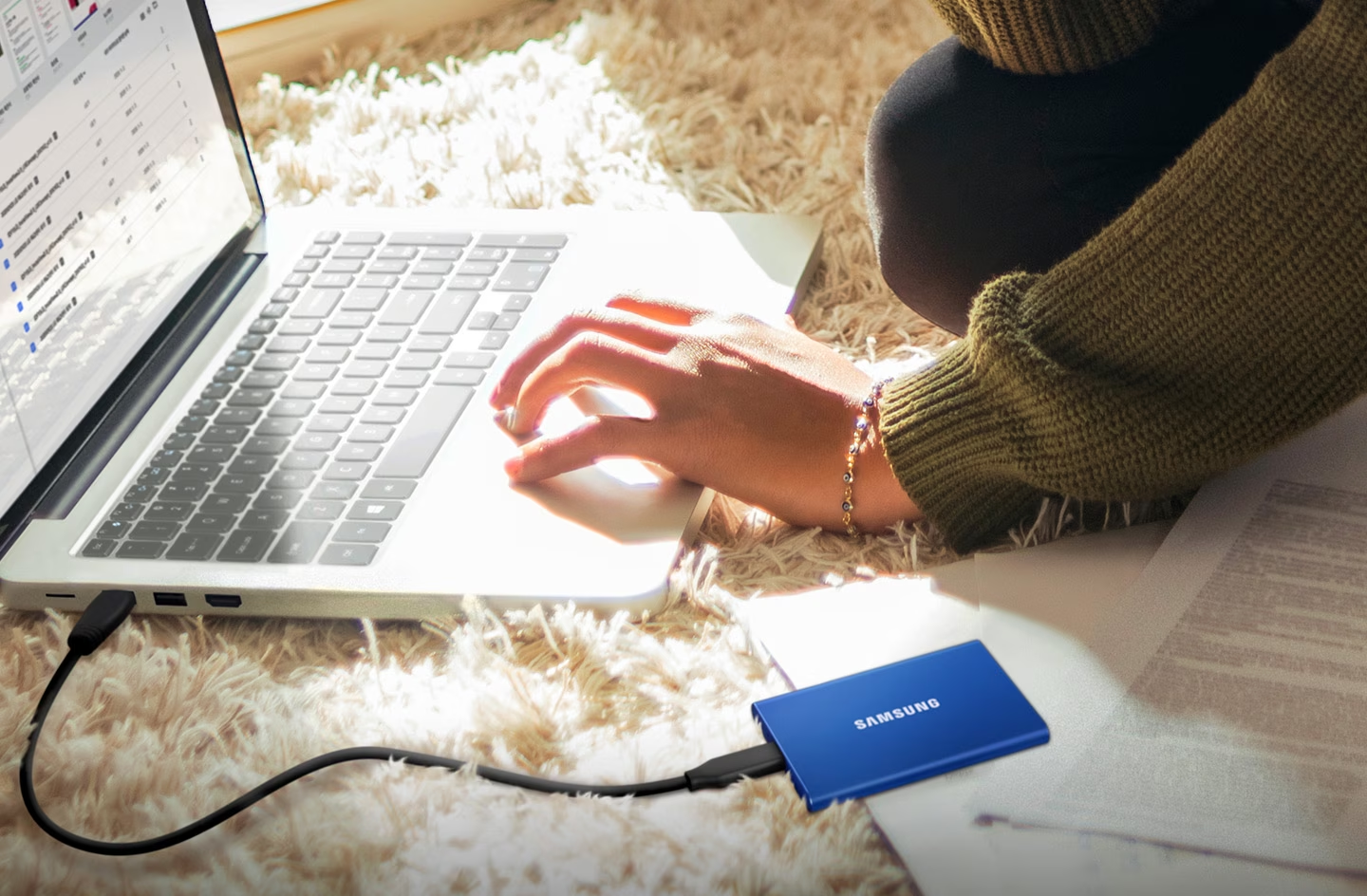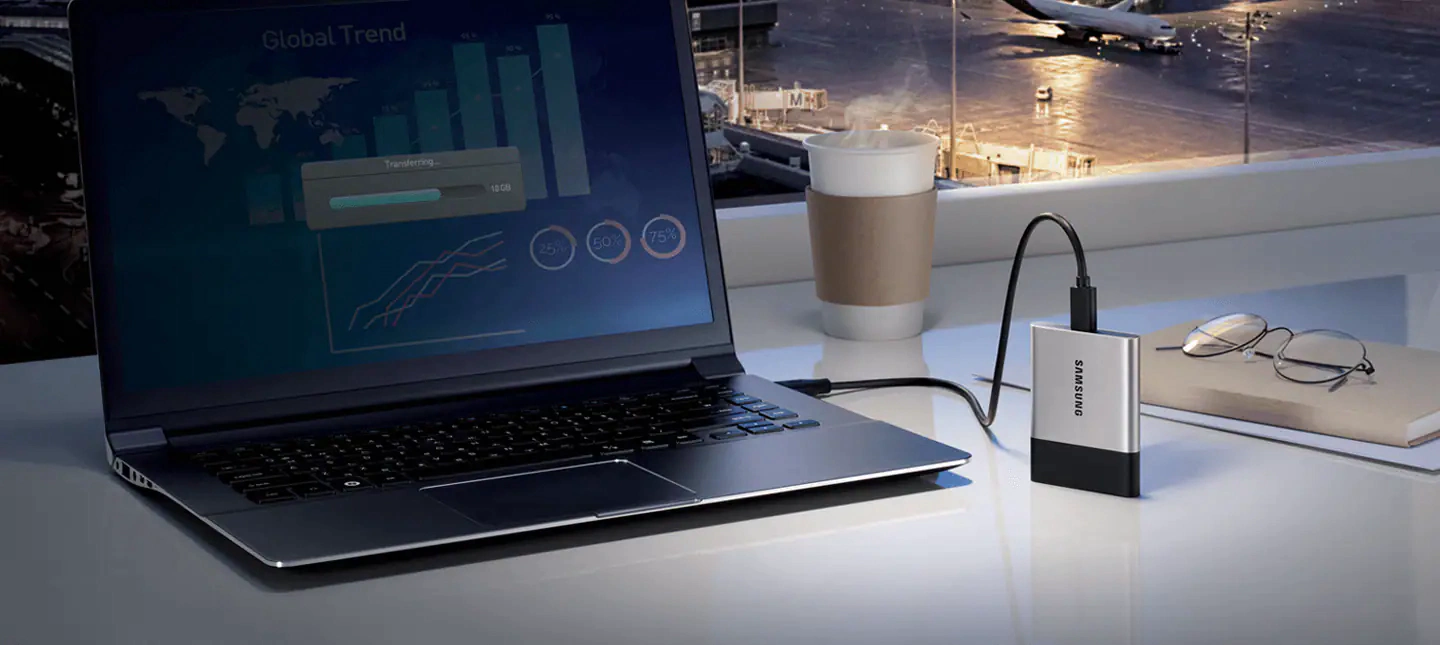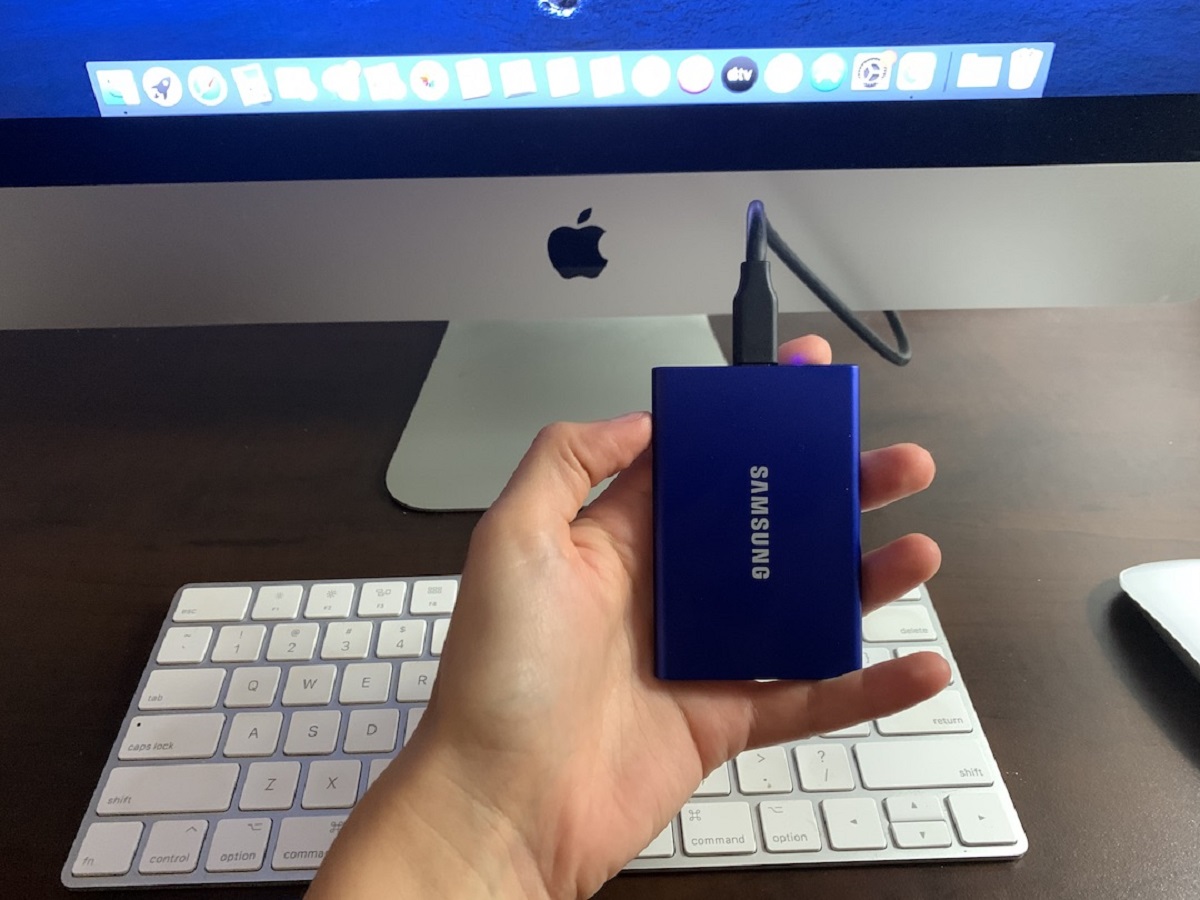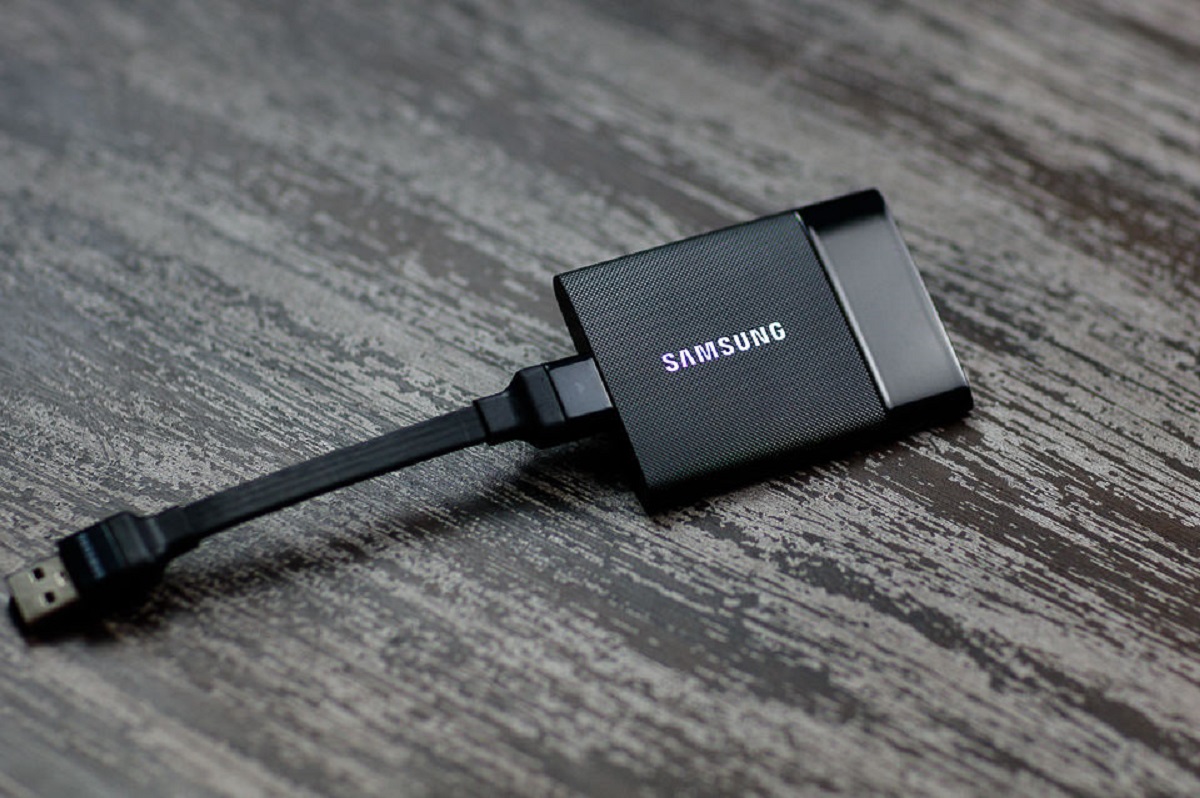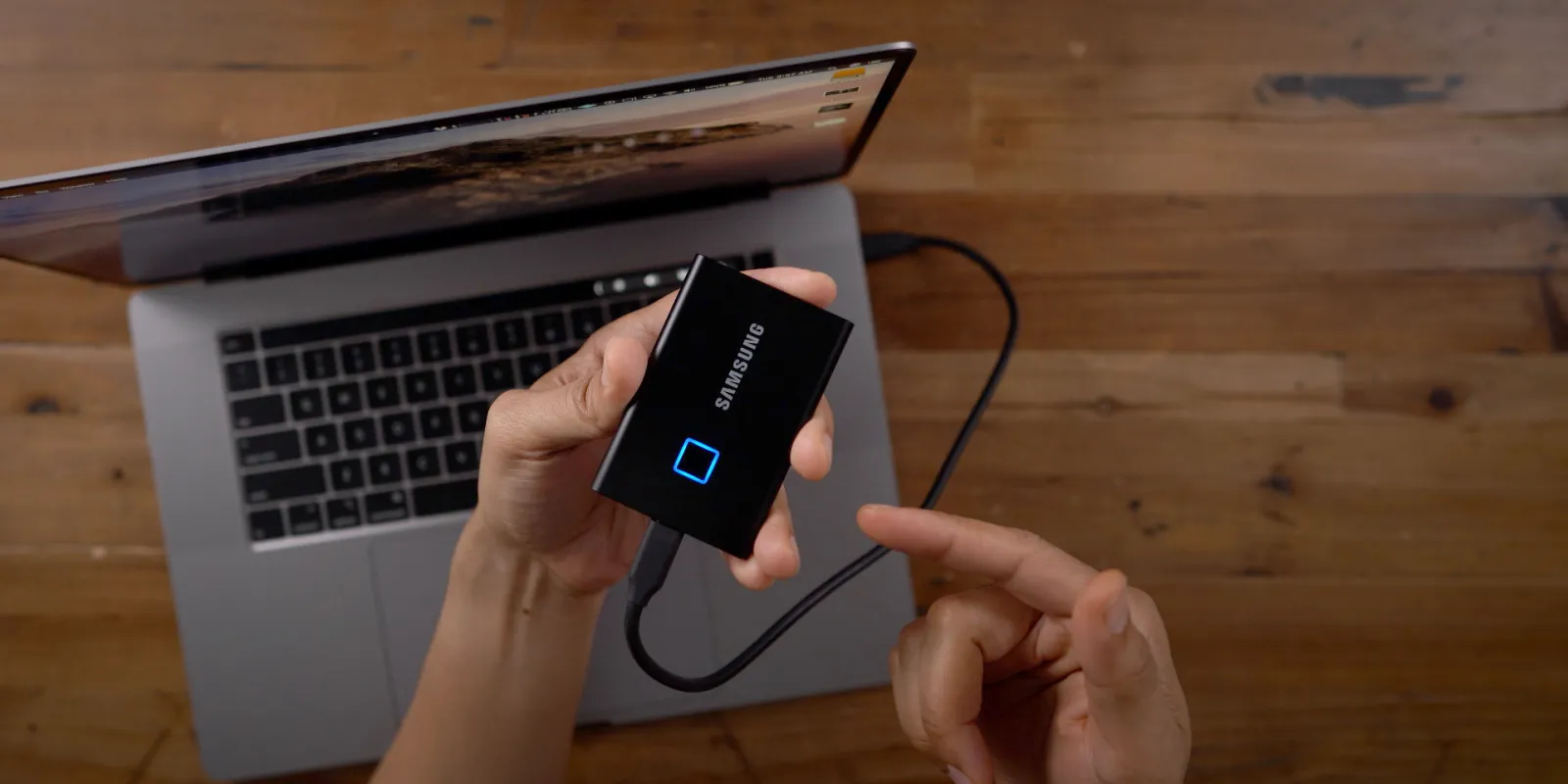Introduction
When it comes to portable storage solutions, the Samsung Portable SSD stands out as a reliable and convenient option. Whether you use it for work, gaming, or personal data storage, it’s crucial to know the proper way to eject the device to safeguard your data and prevent any potential damage. In this article, we will guide you through the process of safely ejecting a Samsung Portable SSD.
The Samsung Portable SSD is a portable solid-state drive that offers fast and secure storage for your important files and media. It connects to your computer via USB and provides an instant boost in transfer speeds compared to traditional external hard drives. However, simply unplugging the SSD without properly ejecting it can lead to data corruption and even physical damage to the device.
By following the correct ejection procedure, you ensure that all data is safely written to the SSD before disconnecting it from your computer. This step is particularly crucial if you’re actively transferring files, as abruptly removing the drive could result in incomplete or corrupted data.
There are two main methods to safely eject a Samsung Portable SSD: through software and through hardware. The method you choose will depend on your preference and the specific situation you’re in. In the following sections, we will provide step-by-step instructions for both methods to assist you in safely ejecting your device.
Before we dive into the methods, it’s important to note that the instructions in this article apply specifically to Samsung Portable SSDs. While the general principles of safe ejection may be applicable to other external storage devices, the steps and software mentioned here are tailored to Samsung’s products.
Now, let’s explore these methods in detail to ensure that you can properly remove your Samsung Portable SSD without compromising your valuable data or the integrity of the device.
Why do you need to eject a Samsung Portable SSD?
Ejecting a Samsung Portable SSD may seem like an unnecessary hassle, especially if you’re in a rush or have been using it without any issues. However, it is a crucial step that should not be overlooked. Let’s explore the reasons why it is essential to properly eject your Samsung Portable SSD.
1. Data Integrity: When you connect your Samsung Portable SSD to your computer, it establishes a connection and starts exchanging data. This data transfer may include writing documents, saving files, or even performing backups. By properly ejecting the SSD, you ensure that all your data is safely written and saved to the drive. Abruptly disconnecting the device while data is being processed can lead to data corruption or loss, compromising the integrity of your files.
2. File System Protection: Ejecting your Samsung Portable SSD ensures that the file system on the drive is properly closed. When you eject the SSD, the operating system sends a signal to the device to finalize any pending read/write operations and safely disconnect. This process ensures that the file system remains intact, preventing any potential file system errors or data inconsistencies that may arise from an improper disconnection.
3. Device and Data Security: Safely ejecting your Samsung Portable SSD helps safeguard your device and data from potential damage. When you eject the SSD, you’re essentially ensuring that it has finished all its internal operations and is ready to be disconnected. Removing the device without proper ejection can put stress on the internal components and potentially cause damage. Additionally, it can lead to data loss or corruption, which can be a significant inconvenience or even a financial loss depending on the importance of the data stored on the SSD.
4. Preventing Performance Issues: While SSDs are generally more resilient than traditional hard disk drives (HDDs), improper ejection can still lead to performance issues. Abruptly disconnecting the device while it’s in use can result in fragmented files or partially written data. These issues can impact the overall performance of your Samsung Portable SSD, leading to slower read/write speeds and reduced overall efficiency.
By taking the time to properly eject your Samsung Portable SSD, you not only protect your valuable data but also ensure the longevity and optimal performance of the device. Now that we understand why it’s essential to eject the device correctly, let’s move on to the step-by-step guide to safely ejecting a Samsung Portable SSD.
Step-by-step guide to ejecting a Samsung Portable SSD
Now that we understand the importance of properly ejecting your Samsung Portable SSD, let’s walk through the step-by-step process to safely disconnect the device. There are two main methods you can use: ejecting through software or ejecting through hardware. Choose the method that suits your preferences and situation.
Method 1: Eject through software
1. Save and Close all open files: Before ejecting your Samsung Portable SSD, ensure that you have saved any open files and closed any applications or programs that are using the drive. This step ensures that all data is written and no pending read or write operations are ongoing.
2. Locate the Eject icon: On your computer’s taskbar or system tray, look for the “Safely Remove Hardware and Eject Media” icon. It is typically represented by a USB plug with a green checkmark or an upward-pointing arrow. Click on this icon to display the list of connected devices.
3. Select your Samsung Portable SSD: From the list of connected devices, identify your Samsung Portable SSD and click on it to select it for ejection. Ensure that you are selecting the correct device to prevent accidentally ejecting other storage devices.
4. Eject the SSD: Once you have selected your Samsung Portable SSD, click on the “Eject” or “Safely Remove” option. This action sends a signal to the SSD, indicating that it can safely disconnect from the computer. Wait for the confirmation message that it is safe to remove the device.
5. Disconnect the SSD: After receiving the confirmation message, gently unplug the USB cable connecting the Samsung Portable SSD to your computer. Make sure to handle the device with care and avoid pulling the cable forcefully to prevent any damage to the connection or the SSD itself.
Method 2: Eject through hardware
1. Save and Close all open files: Just like the previous method, ensure that all your files are saved and any applications using the Samsung Portable SSD are closed.
2. Locate the USB port and cable: Identify the USB port on your computer where the Samsung Portable SSD is connected. Follow the USB cable from the SSD to the computer to locate the point of connection.
3. Safely disconnect the SSD: Gently grasp the USB connector of the Samsung Portable SSD and carefully unplug it from the USB port on your computer. Make sure to pull straight out and avoid any unnecessary force or bending of the connector.
4. Confirm disconnection: After disconnecting the SSD, monitor the computer screen for any prompts or messages confirming the disconnection. Some operating systems may display a notification or provide a message indicating that the device has been safely removed.
By following either of these methods, you can ensure that your Samsung Portable SSD is safely ejected from your computer, reducing the risk of data corruption and device damage. Remember to handle the SSD with care and always follow the proper ejection procedure to maintain the optimal performance and longevity of the device.
Method 1: Eject through software
If you prefer to eject your Samsung Portable SSD using software, follow these step-by-step instructions:
1. Save and close all open files: Before ejecting the SSD, make sure to save any open files and close any applications or programs that are using the drive. This step ensures that all data is properly written and no pending read or write operations are ongoing.
2. Locate the Eject icon: Look for the “Safely Remove Hardware and Eject Media” icon on your computer’s taskbar or system tray. This icon is typically represented by a USB plug with a green checkmark or an upward-pointing arrow. Click on this icon to display the list of connected devices.
3. Select your Samsung Portable SSD: From the list of connected devices, identify your Samsung Portable SSD and click on it to select it for ejection. It’s important to ensure that you are selecting the correct device to prevent accidentally ejecting other storage devices.
4. Eject the SSD: Once you have selected your Samsung Portable SSD, click on the “Eject” or “Safely Remove” option. This action sends a signal to the SSD, indicating that it can safely disconnect from the computer. Wait for the confirmation message that it is safe to remove the device.
5. Disconnect the SSD: After you receive the confirmation message, gently unplug the USB cable that connects the Samsung Portable SSD to your computer. It’s crucial to handle the device with care and avoid pulling the cable forcefully, as this can result in damage to the connection or the SSD itself.
By following these steps, you can safely eject your Samsung Portable SSD using the software method. This method ensures that all data is properly written to the drive and reduces the risk of data corruption or device damage. It is a convenient and straightforward way to disconnect your SSD when you are finished using it.
Remember, always follow the proper ejection procedure to maintain the integrity of your data and the optimal performance of your Samsung Portable SSD.
Method 2: Eject through hardware
If you prefer to eject your Samsung Portable SSD using the hardware method, follow these step-by-step instructions:
1. Save and close all open files: Before ejecting the SSD, make sure to save any open files and close any applications or programs that are using the drive. This step ensures that all data is properly written and no pending read or write operations are ongoing.
2. Locate the USB port and cable: Identify the USB port on your computer where the Samsung Portable SSD is connected. Follow the path of the USB cable from the SSD to the computer to locate the point of connection.
3. Safely disconnect the SSD: Gently grasp the USB connector of the Samsung Portable SSD and carefully unplug it from the USB port on your computer. Make sure to pull straight out and avoid any unnecessary force or bending of the connector.
4. Confirm disconnection: After disconnecting the SSD, monitor the computer screen for any prompts or messages confirming the disconnection. Some operating systems may display a notification or provide a message indicating that the device has been safely removed.
By following these steps, you can safely eject your Samsung Portable SSD using the hardware method. This method allows you to physically disconnect the SSD from your computer by unplugging the USB cable. It is a reliable way to ensure that the SSD is properly disconnected and reduces the risk of data corruption or device damage.
Remember, always handle the SSD with care when ejecting it through hardware. This method is especially useful when the software-based eject option is not available or if you prefer a more hands-on approach to disconnecting your Samsung Portable SSD.
Conclusion
Ejecting your Samsung Portable SSD properly is a crucial step to ensure the integrity of your data and the longevity of the device. By following the step-by-step guide provided in this article, you can safely disconnect the SSD without risking data corruption or physical damage.
Whether you choose to eject through software or hardware, both methods offer a reliable way to disconnect the Samsung Portable SSD from your computer. Ejecting through software allows for a streamlined and convenient approach, while ejecting through hardware gives you a more hands-on control over the disconnection process.
Remember to save and close all open files before ejecting, allowing the device to complete any pending read or write operations. This ensures that all data is properly written and reduces the risk of file corruption.
Whether you’re using your Samsung Portable SSD for work, gaming, or personal data storage, properly ejecting the device should be a standard practice. By doing so, you protect your valuable data, prevent potential performance issues, and maintain the optimal functioning of the SSD.
Always handle your Samsung Portable SSD with care when disconnecting it from your computer. Avoid pulling the USB cable forcefully or bending the connector, as this can cause damage to the device or the connection itself.
By following these guidelines, you can confidently eject your Samsung Portable SSD with peace of mind, knowing that your data and device are protected. Incorporate this proper ejection process into your routine, and enjoy the convenience and security that the Samsung Portable SSD offers as a portable storage solution.







